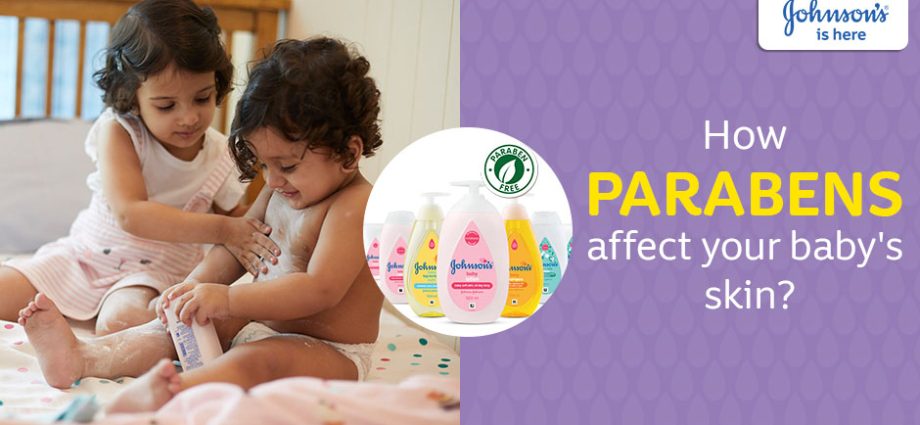The skin of a child is significantly different from that of an adult. First of all, it is much thinner and its fibers are not fully developed yet. Therefore, it is more exposed to external environmental factors and water loss. What substances are safe for the baby’s delicate epidermis?
Baby’s skin requires special care
A child’s sensitive and delicate skin requires care tailored to its needs. Due to the fact that it is much thinner, substances contained in cosmetics, including antibacterial substances and alcohol, penetrate it more easily, and therefore their concentration is higher than in adults. Moreover, the hydrolipid coat itself and the protective barrier of the epidermis of children are not fully developed yet. This raises some problems, including an increased susceptibility to dryness and irritation.
When faced with the choice of cosmetics that are gentle and safe for the child’s skin, many doubts appear in the minds of parents. In the era of fast internet access, it is very easy to get misinformed. You can find a lot of unverified and unreliable information. Many of them are not supported by scientific research. It’s time to dispel the most common myths.
Facts and myths about the safety of a toddler’s skin
With number 1: Alcohol with a concentration of 70 percent. when used to care for the umbilical cord stump, it accelerates healing and falling off
Fact: Until recently, this opinion was very common in Poland. However, recent scientific studies have shown that such a high concentration can be counterproductive. Moreover, many parents wash their umbilical cord stump with spirit each time they change their baby, which is not medically justified. Safe substances for infants are, in turn, octenidine and phenoxyethanol, e.g. in the form of Octenisept® spray. It can be used several times a day, with particular emphasis on the base of the stump. The operating time is 1 min. After this, it is a good idea to gently dry the stump with a clean, sterile gauze pad. The average time for the stump to fall off after birth is 15 to 21 days.
With number 2: Phenoxyethanol is not a safe preservative used in cosmetics for children
Fact: Phenoxyethanol (phenoxyethanol) is a substance that is commonly used, for example, in in creams used in the treatment of diaper dermatitis in children under 3 years of age. According to reports from the Institute of Mother and Child, phenoxyethanol (phenoxyethanol) is a safe preservative used in cosmetics for infants and children. A few years ago, at the request of France, the issue of its safety in diaper creams for children under 3 years old was re-examined, but an international panel of experts did not change previous recommendations and phenoxyethanol may still be used in these products. It is worth knowing that the safety of phenoxyethanol has also been confirmed by the European Medicines Agency and the Scientific Committee for Consumer Safety (SCCS).
With number 3: All substances with antibacterial properties can be used for minor abrasions and wounds in children
Fact: Unfortunately, this is not true. In children under 6 months of age, the compound called PVP-J (iodinated polyvinyl povidone) is not used. Due to the presence of iodine, thyroid function should be constantly monitored. Until the age of 7, it is also not recommended to administer silver compounds. The use of polyhexanide (currently banned from use in body hygiene biocidal products) can be equally dangerous. This compound is suspected to promote tumor formation. A safe substance for newborns, infants and children is octenidine, contained in products of the line, eg Octenisept®.
With number 4: Zinc oxide products can be used for advanced inflammation and open, oozing wounds
Fact: Preparations with zinc oxide are used from the first day of a child’s life. They have antiseptic, anti-inflammatory, drying and astringent properties. However, they cannot be applied indefinitely. They should not be used on oozing wounds and acute skin inflammation. A much safer choice is to apply preparations containing octenidine, panthenol and bisabolol, e.g. Octenisept® cream. It can be applied to wounds, abrasions, skin cracks and acute inflammation. It has a protective and antibacterial effect and supports the regeneration of the epidermis. It can also be safely used in premature babies and infants. It also comes in the form of a gel or cream.
With number 5: All preservatives contained in cosmetics and preparations for children are dangerous
Fact: Of course, a world without preservatives would be perfect, but you have to remember that they allow for safe storage and use of the cosmetic after opening. The most recommended preservatives are: benzoic acid and sorbic acid and their salts (Sodium benzoate, Potassium sorbate), ethylhexylglycerin (Ethylhexylglycerin),
With number 6: Parabens such as, for example, methylparaben and ethylparaben are dangerous to children’s skin
Fact: Recent scientific studies have shown that only methylparaben and ethylparaben can be safely used in children under 3 years of age. They are found in preparations used in nappy rash and diaper rash. However, be careful that the composition of such cosmetics does not include such parabens as propylparaben and butylparaben.
All doubts about the composition of cosmetics and skin care products for a child should be verified with reliable sources. Official websites are recommended, such as the EUR-Lex database of European Union legal acts and https://epozytywnaopinia.pl/.










